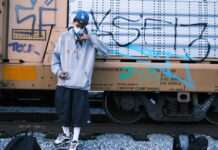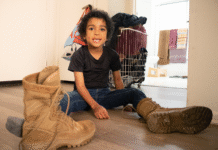
Mannequins resembling life-size Barbie dolls and photos of fashion-standard models wearing the latest trends are displayed at every corner of each store at a Los Angeles mall.
Alexus Gregg, who wears sizes 12-14, has been at the mall for more than an hour, trying to find a trendy outfit in her size, with limited success. Most of the stores only carry up to a size 8, which is too small for Gregg.
She grows frustrated at the lack of good clothing options for her body type. Feeling left out, she looks over in disappointment as she flips through another rack of shirts, all of which are marked with sizes too small. For Gregg, this is not an uncommon experience.
Gregg is a plus-size model in an industry that largely caters to body proportions that don’t match the average woman in America.
LIFE AS A CURVE MODEL
According to PLUS Model Magazine, the term “plus size” applies to any women sized 12 and over.
However, Plunkett Research reports 67 percent of American women are size 14 or larger.
“When I was younger, I liked being in front of the camera,” Gregg said. “But, I just knew I wasn’t going to be a model. I knew what the viewpoint of a model was and it wasn’t what I was, because I was always bigger.”
Like Gregg, many young girls start to feel insecure about their bodies based on the daily exposure to highly-airbrushed imagery of stick-thin models, receiving a message that you are not beautiful if you are not thin.
As for Gregg, that photoshopped image of perfection made her believe that being a model wasn’t feasible.
It wasn’t until she uprooted her life to move to the West Coast that Gregg began to see a change in the fashion industry, giving her a chance to go forward to try and make her childhood fantasy a reality.
After moving to Los Angeles in 2015 to become a wardrobe stylist, the Kansas City native gained the confidence to get in front of the camera as a plus size model.
“About two years into living in Los Angeles, I was like okay, maybe I could try this, because plus-size modeling was becoming more of a thing then,” Gregg said.
With more than 4,000 followers on instagram and sponsorship deals with clothing brands such as Rue21, Gregg is now living her dream.
BUSINESS OF CURVE
In the age of social media, plus size models are using platforms such as Instagram and Twitter, not only to sell and promote products, but to reach out to industry experts, helping them to further their career.
It was social media that helped Gregg get signed to the Los Angeles-based modeling agency Natural Models LA, which specializes in plus-size fashion.
Although the fashion industry is changing to be more inclusive, many in the industry say the business of plus size fashion is something that many in the mainstream still choose to ignore.
“A lot of brands think very narrowly about who their customer is,” said Matthew Kaness, the chief executive of online retail outlet ModCloth, to The Washington Post.
According to CNN, from May 2010 – April 2011, the plus size fashion market for women made more than $17.5 billion in sales. However, only 17 percent of the overall women’s fashion industry money was spent on plus size apparel.
That has left designers like Eboni Lacey to improvise to have plus size options readily available.
“It is hard as shit to be a screen printer or a designer that does wording on top of clothing for plus sizes because I order everything from vendors,” said Lacey, the founder of the ‘The Identity of She.’ “A lot of these vendors don’t carry more than 2XL, so I have to basically cut my own stuff and go and buy things so I can have stuff in 3XL, 4XL.”
According to ModCloth, 65 percent of plus-size women believe that “the retail industry ignores the needs of plus-size women,” 92 percent of plus-size women feel “upset when they can’t find cute clothes in their size” and 74 percent of plus-size women describe feeling “frustrated” and 65 percent describe feeling “excluded” when in-store shopping.
For many retailers, appealing to the plus-size market doesn’t seem to be of importance.
“Retailers shy away from stocking larger sizes,” said Marshal Cohen, chief industry analyst at NPD, a market research company that focuses on retail trends, to Glamour magazine. “There are old beliefs that women who wear plus sizes are less likely to buy clothes, so stores focus on expanding beauty and accessories, which have higher sell-through rates.”
For that blank space in the fashion industry, boutiques like Chic and Curvy are helping to fill it.
Before getting signed with Natural Models LA, Gregg said many modeling agencies rejected her due to her size.
A plus size agency even asked her to gain 20 pounds, after she lost weight.
“That was really upsetting to me, because I have worked so hard to get where I want to be, and I don’t want to change myself to fit into what you guys are trying to do,” Gregg said. “I want to be able to do it for me at the size that I feel comfortable at.”
Gregg said that little girl who never thought she would be a model is gone and, with confidence and determination, she is set to be the fashion role model to other young girls that she didn’t have.
“You’re not too anything,” Gregg said. “I feel like it’s great now, where the industry is changing just a little bit. We’re starting to try to be more inclusive, but there’s just so much work that we need to do. That’s what I want to try and help do.”



